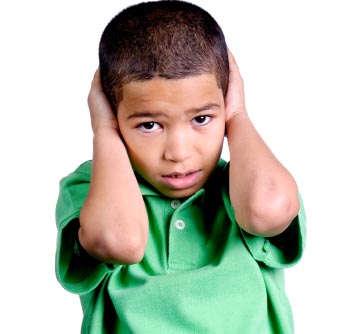Segundo a Direcção Geral do Ambiente, mais de 60 por cento da população portuguesa vive com níveis de ruído acima do recomendado pela Organização Mundial de Saúde (mais de 55 decibéis), sendo que 19 por cento está mesmo exposta a barulho incomodativo (mais de 65 decides). A situação é mais crítica é nos grandes pólos urbanos, já que o tráfego rodoviário expõe diariamente cinco milhões de portugueses a tons excessivos e nocivos para a saúde.
A principal causa de perda auditiva nos jovens e adultos é o ruído. Esta situação é definitiva e, como tal, irreversível. O cenário não é animador, uma vez que, contrariamente a outros países da União Europeia, Portugal tem registado, nos últimos anos, um aumento dos níveis de ruído, especialmente nas grandes cidades, fazendo com que, no seu dia-a-dia, cinco milhões de portugueses se encontrem expostos a elevados níveis de ruído, quer devido à sua profissão, quer devido ao tráfego rodoviário. Para além de perda auditiva irreversível, a exposição prolongada ao ruído pode originar outros problemas de saúde, como psicológicos ou doenças cardiovasculares.

“A perda auditiva induzida por um trauma acústico é uma realidade que não deve ser ignorada. É a principal causa de perda auditiva irreversível. Todos nós estamos expostos diariamente a ruído excessivo, com consequências directas”, segundo refere em comunicado Pedro Paiva, audiologista.
A perda da audição pode ser causada por um problema mecânico no canal auditivo ou no ouvido médio que obstrói a condução do som (perda condutiva de audição) ou por uma lesão no ouvido interno, no nervo auditivo ou nas vias do nervo auditivo no cérebro (perda neuro-sensorial da audição). Os dois tipos de perda da audição podem ser diferenciados comparando como uma pessoa ouve os sons conduzidos pelo ar e como os ouve conduzidos pelo ossos.
A perda neuro-sensorial denomina-se sensorial quando afecta o ouvido interno, e neural quando afecta o nervo auditivo ou as vias do nervo auditivo localizadas no cérebro. A perda auditiva sensorial pode ser hereditária, ser provocada por ruídos muito intensos (trauma acústico), por uma infecção viral do ouvido interno, por certos fármacos ou pela doença de Ménière.
Evitar exposição a ruído intenso, não se automedicar, não introduzir objectos no ouvido, evitando também a tentativa de limpar o conduto auditivo são atitudes que podem evitar uma deficiência auditiva, tanto na infância e adolescência como na fase adulta.
Notícia acedida em Ciência Hoje



